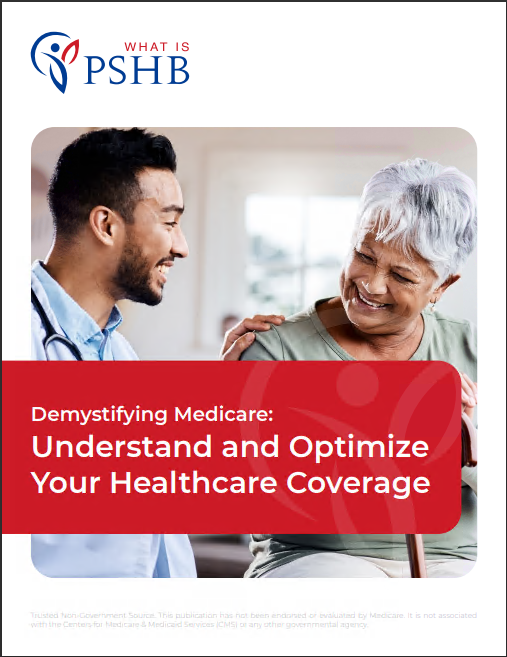Key Takeaways:
- PSHB offers comprehensive health benefits to postal employees and their families, ensuring their access to a range of healthcare services.
- Understanding the specifics of PSHB coverage is crucial for postal employees to maximize the benefits available to them and their families.
PSHB Health Benefits for Families: What Postal Employees Need to Know
Postal Service Health Benefits (PSHB) is a program designed to provide health insurance coverage to employees of the United States Postal Service (USPS) and their families. It is part of the larger Federal Employees Health Benefits (FEHB) program but is tailored specifically for postal workers. The transition to PSHB is set to occur in 2025, replacing the existing FEHB program for postal employees. This shift is crucial for postal workers to understand, as it affects their health coverage options and the benefits available to them and their families.
What Is the PSHB Program?
The PSHB program is a new initiative created under the Postal Service Reform Act of 2022, aimed at securing sustainable health benefits for postal employees and retirees. Unlike the broader FEHB program, which covers a wide range of federal employees, the PSHB is designed exclusively for USPS workers. This specialization allows the PSHB to offer benefits that better meet the specific needs of postal workers and their families.
The PSHB program provides a variety of health insurance plans, each offering different levels of coverage. These plans include options for both active employees and retirees, ensuring continuous coverage throughout an individual’s career and into retirement. It’s important to note that while the PSHB is separate from the FEHB, it retains many of the same benefits, such as access to nationwide networks of healthcare providers, prescription drug coverage, and wellness programs.
Key Dates for PSHB Enrollment
Understanding the timeline for PSHB enrollment is essential for postal employees and their families. The transition to the PSHB program is scheduled for January 2025. This means that current postal employees enrolled in FEHB plans will need to transition to PSHB plans during the Open Season period in 2024, typically held from mid-November to mid-December. This period is when employees can review their health plan options and make selections for the upcoming year.
Missing the Open Season enrollment period could result in delays or gaps in coverage, making it crucial for postal employees to stay informed about deadlines and required actions. Additionally, retirees who are currently enrolled in FEHB will also need to transition to PSHB during this time to ensure continued coverage.
Coverage Options Under PSHB
The PSHB program will offer a range of health insurance plans to meet the diverse needs of USPS employees and their families. These plans will vary in terms of premiums, deductibles, co-pays, and coverage options. Some plans may offer lower out-of-pocket costs for in-network care, while others may provide more comprehensive coverage for out-of-network services.
One of the significant advantages of the PSHB program is the flexibility it offers. Employees can choose from various plan types, including:
-
Health Maintenance Organization (HMO) Plans: These plans typically require members to use a network of doctors and hospitals for their care. HMOs often have lower premiums and out-of-pocket costs but may require referrals to see specialists.
-
Preferred Provider Organization (PPO) Plans: PPO plans offer more flexibility in choosing healthcare providers, including the option to see specialists without a referral. However, using out-of-network providers may result in higher costs.
-
High Deductible Health Plans (HDHPs): These plans generally have lower premiums but higher deductibles. They are often paired with Health Savings Accounts (HSAs), which allow employees to save money tax-free for medical expenses.
Each of these plan types offers different benefits and cost structures, making it essential for postal employees to carefully evaluate their options based on their healthcare needs and financial situation.
Impact on Retirees and Medicare Integration
For retirees, the transition to PSHB is particularly significant because it includes changes to how Medicare integrates with their health benefits. Under the new system, Medicare-eligible postal retirees will be required to enroll in Medicare Part B, which covers outpatient services, including doctor visits and preventive care.
The PSHB program will work in tandem with Medicare to provide comprehensive coverage for retirees. This means that PSHB will cover costs not paid by Medicare, such as deductibles and coinsurance. However, retirees will need to pay Medicare Part B premiums in addition to any premiums for their PSHB plan.
This integration with Medicare is designed to ensure that retirees have access to a wide range of healthcare services without facing significant out-of-pocket expenses. It’s important for retirees to understand these changes and how they will affect their healthcare costs and coverage.
Preparing for the Transition to PSHB
As the transition to the PSHB program approaches, it’s essential for postal employees and their families to prepare. Here are some steps to take:
-
Review Current Coverage: Employees should start by reviewing their current FEHB coverage and comparing it to the options available under the PSHB program. This will help them determine if their current plan meets their needs or if a different PSHB plan would be more suitable.
-
Attend Information Sessions: USPS and the Office of Personnel Management (OPM) will likely offer information sessions and resources to help employees understand their options under the PSHB program. Attending these sessions can provide valuable insights and answer any questions employees may have.
-
Consider Health Needs: When selecting a PSHB plan, it’s important to consider current and future health needs. This includes evaluating the types of medical services frequently used, any ongoing medical conditions, and the need for specialized care.
-
Budget for Premiums and Out-of-Pocket Costs: Employees should also consider the cost of premiums, deductibles, and co-pays when selecting a plan. It’s important to choose a plan that fits within the household budget while providing adequate coverage.
-
Consult with Family Members: Since PSHB coverage extends to family members, employees should discuss their healthcare needs and preferences with their spouses or dependents. This will ensure that the selected plan meets the needs of the entire family.
What Happens If You Miss the Enrollment Period?
Missing the Open Season enrollment period can have significant consequences. Employees who do not enroll in a PSHB plan during the designated period may face gaps in coverage or be automatically enrolled in a default plan, which may not meet their specific needs. This is why it is critical for postal employees to stay informed about enrollment deadlines and take action within the given timeframe.
If an employee misses the Open Season, they may have to wait until the next enrollment period to make changes to their coverage, which could result in a lack of access to certain healthcare services or higher out-of-pocket costs in the interim.
Resources for Postal Employees
To assist postal employees in navigating the transition to the PSHB program, several resources will be made available. The USPS, in collaboration with the OPM, will provide online tools, informational brochures, and customer service hotlines to help employees understand their options and make informed decisions.
Additionally, employees can seek advice from licensed insurance agents who specialize in federal employee health benefits. These professionals can offer personalized guidance based on an individual’s specific circumstances, helping them choose the best plan for their needs.
Moving Forward with PSHB
As the USPS transitions to the PSHB program, it is important for postal employees to remain proactive about their health insurance. By understanding the key dates, evaluating their coverage options, and preparing for the changes ahead, employees can ensure that they and their families continue to receive the healthcare services they need without interruption.
The PSHB program represents a significant shift in how postal employees receive health benefits, but with careful planning and attention to detail, the transition can be smooth and beneficial for all involved.
Ensuring Continuous Coverage
To ensure continuous coverage under the PSHB program, employees must stay informed, act promptly during the Open Season, and regularly review their health insurance needs. By doing so, they can make the most of the benefits available to them and their families through the PSHB program.
Contact Information:
Email: [email protected]
Phone: 2165555678










